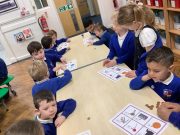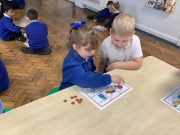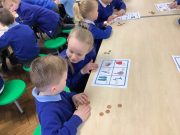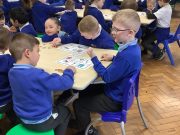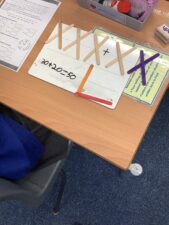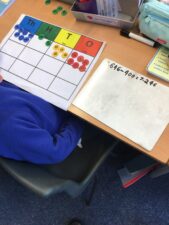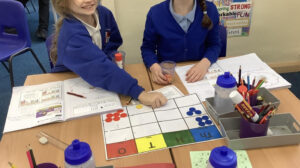“Doing Mathematics should always mean finding patterns and crafting beautiful and meaningful explanations”
Paul Lockhart
Teaching of Maths at Mersey Park

Please click the link below to find out about how we teach Maths at Mersey Park.
Mathematics at Mersey Park Primary School
Mathematics Report to Governors
Maths Report for Governors 2025
Long Term Overview for Maths

Knowledge Organisers are used for each topic to revise key concepts and embed learning.
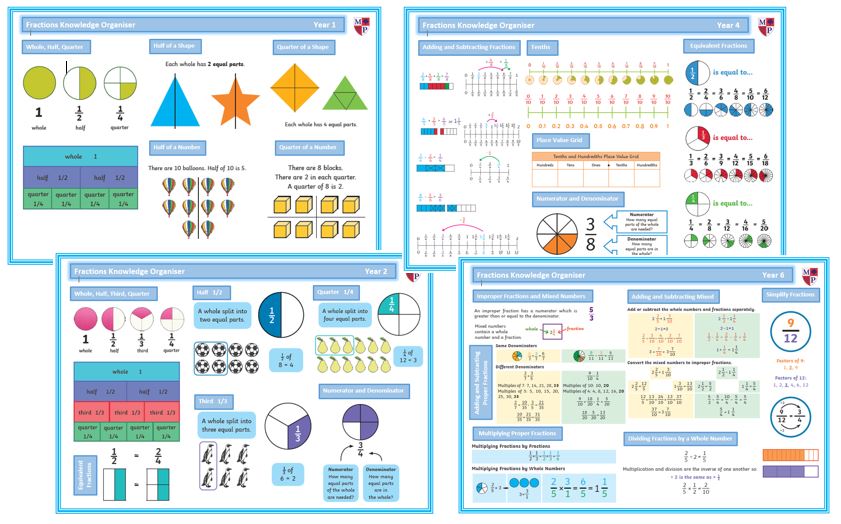
Concrete manipulatives are used in all classrooms to help embed key concepts and support our children’s learning.
Interactive, vibrant displays in all classrooms are used as a teaching tool to reinforce learning.


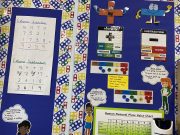
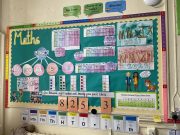


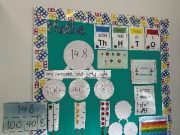
Autumn Term
Foundation 1
In Foundation 1 children develop a love of maths through games, songs, rhymes, and play using concrete manipulatives. The children begin to learn the basic counting principles; one to one correspondence, stable order and cardinal principle. Children’s fine manipulative skills are a focus to develop 1-1 correspondence so children count each object only once.


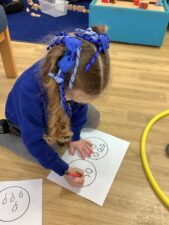
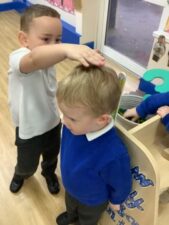
Foundation 2
In Foundation 2 the children begin to follow the Power Maths Programme. High quality learning environments are provided and meaningful interactions with adults, support children in developing mathematical thinking and discussion. The children learn through games and tasks using concrete manipulatives and pictorial structures and representations which are then rehearsed applied and recorded within their own child-led exploration. The children enjoy exploring shapes which can stack and roll. The children create their own patterns using paint. The children measure salt, flour and water to make salt dough. They use comparative language to describe their actions.
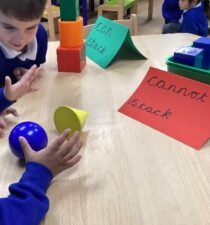
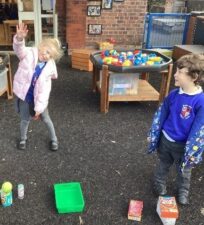
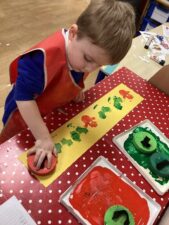
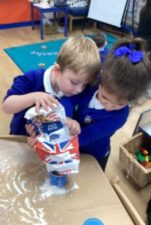
Year 1
In Year 1 the children start the year by learning about place value. They revise numbers to 10 and use models such as ten frames and part whole models to visualise the value of numbers. They learn about the symbols greater than, less than and equal to. They also learn about one more and one less and this is introduced through a game of musical chairs. They begin to explore addition and numbers to 20.
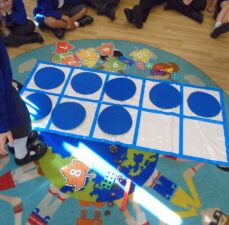


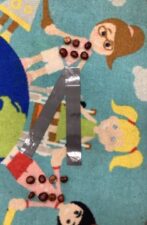
Year 2
Year 2 start their maths journey by learning about place value of numbers to 100. They build upon their knowledge of numbers to 50 which is introduced in Year 1 and revise some of the common representations we use to visualise numbers. The children revise number bonds and use this to derive related facts. They partition numbers into different combinations of tens and ones using part whole models to support their thinking.
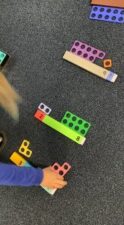
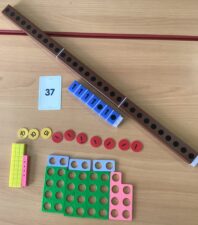
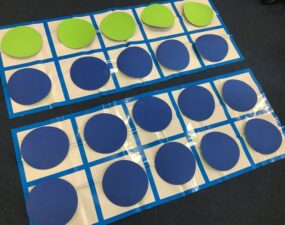

Year 3
In Year 3 the children start the year learning about place value of 3 digit numbers. They use a range of concrete manipulatives to form 3 digit numbers. The children then use their knowledge of place value to add and subtract numbers, then eventually progress to the column method to answer addition and subtraction calculations.
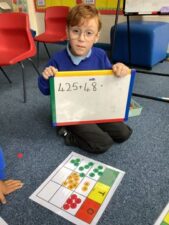
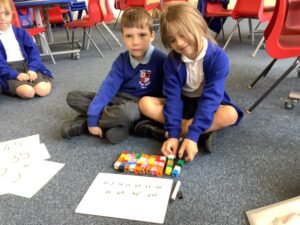
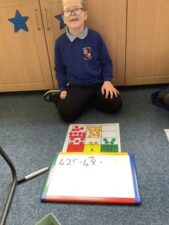
Year 4
In Year 4 the children begin the year with place value where they learn four digit numbers and practise adding and subtracting them. They begin revising for the multiplication test by recapping previous taught times tables to improve fluency. They also multiply and divide by 10 and 100 and divide 0 and 1 using concrete manipulatives. The consolidate and develop their learning on rounding numbers to the nearest 10, 100 and 1000. The begin learning roman numerals to 100 using practical methods.
Year 5
In Year 5 the children start the year consolidating their knowledge of place value. They revise pictorial representations used to represent numbers to 1 million. They use concrete manipulatives to make numbers using place value charts. They also learn to read and write Roman Numerals. Year 5 then move on to addition and subtraction where they build on the skills taught in Year 4 by adding and subtracting increasingly large numbers up to 1 million using formal methods. Towards the end of the term, Year 5 then work on their statistics topic where they gain an understanding of how to read and interpret line graphs and two way tables.
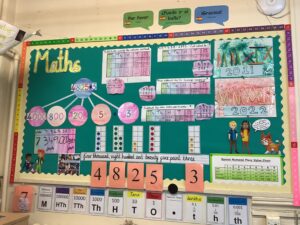
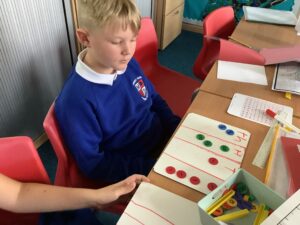
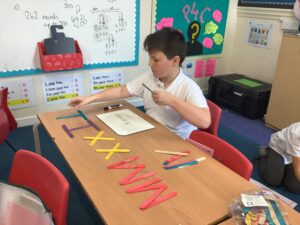
Year 6
In Year 6 the children start the year by learning about the value of numbers up to 10 000 000. They then secure their written method for the four operations and apply these methods to reasoning word problems. The children then revise their knowledge of multiples, factors, prime numbers, square numbers and cubed numbers. They finish this term by consolidating their knowledge of addition and subtraction of fractions and learn how to multiply and divide fractions.
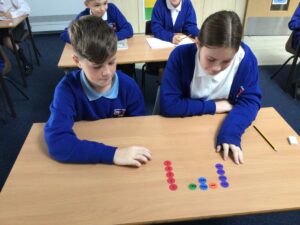
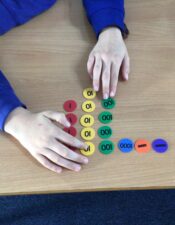
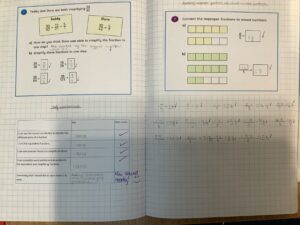
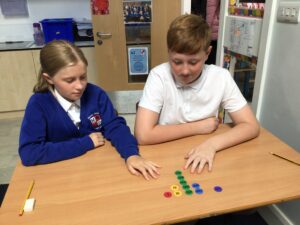
Spring Term
Foundation 1
In Foundation 1 the children explore capacity in the water tray. They identify patterns around the different areas and then create and extend their own patterns. They also select the correct shapes to help them to build.
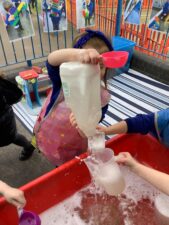
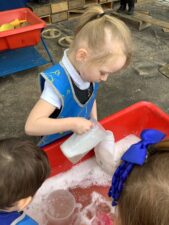
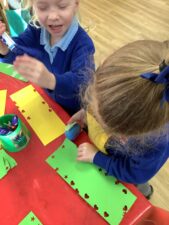
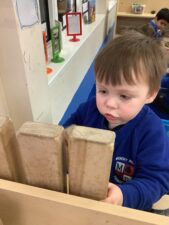
Foundation 2
In Foundation 2 the children continue to learn all about numbers to 5, involving matching the numeral to the correct amount. They practice counting with 1 to 1 correspondence. They use models such as part wholes and five frames to make their numbers. They begin to explore different ways of making numbers up to 10.
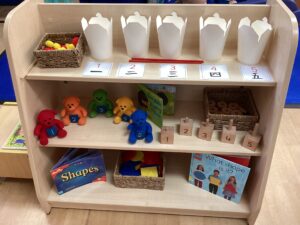
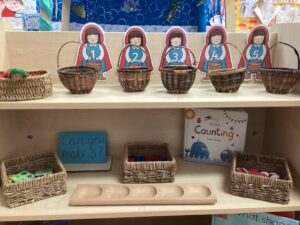
Year 1
In Year 1, the children continue to develop their addition and subtraction skills. They also introduce multiplication by counting in 2s, 5s and 10s. They explore problems using concrete manipulatives and move onto pictorial and abstract representations, such as number sentences. The children also explore place value and begin to partition and combine into tens and ones, using dienes material to support this.
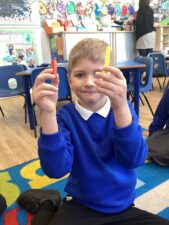
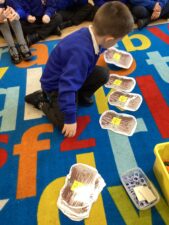

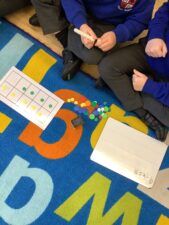
Year 2
In Year 2 the children revise greater than, less than and equal too. They learn how to divide into groups and share equally. They apply their knowledge of division and multiplication to show their answers as arrays, repeated addition number sentences and in bar models. They revise fractions and learn new ones such as three quarters and one third. They begin by exploring fractions of shapes and then move onto numbers. They make links to the two, five, three and ten times tables.
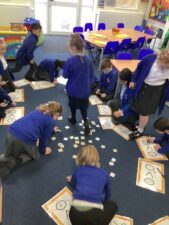
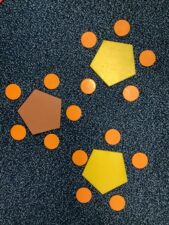


Year 3
In Year 3 the children learn how to multiply and divide 2 digit numbers by 1 digit numbers. They use concrete manipulatives and pictorial representations to help them do so. The children enjoyed using classroom objects and hula hoops to further their understanding of division. The children also enjoyed learning how to convert, add and subtract money. They used real life money to solve different problems. They now understand the value of each coin.
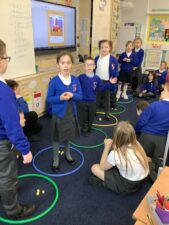

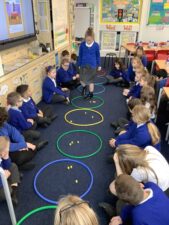
Year 4
In Year 4 the children continue to study fractions. This includes looking at families of equivalent fractions, adding and subtracting fractions with the same denominator and converting mixed fractions to improper ones.
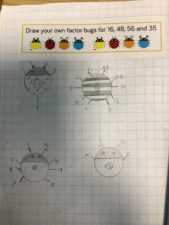
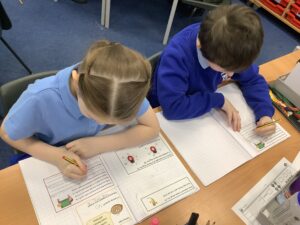
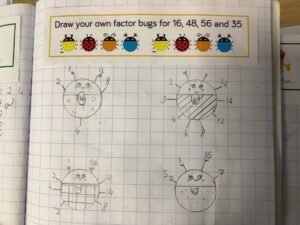
Year 5
In Year 5 the children advance their multiplication and division skills through the use of formal written methods. They learn how to solve real life problems using long multiplication and short division.
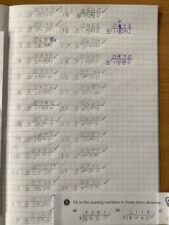


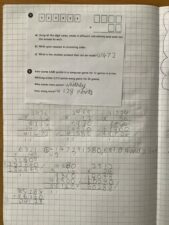
Year 6
In Year 6 the children convert fractions, decimals and percentages using the most efficient methods. They apply their arithmetic knowledge to solve a variety of tricky reasoning questions in preparation for our SATs. They convert imperial and metric units of measurement and use formulae to calculate the area and perimeter of 2D shapes.
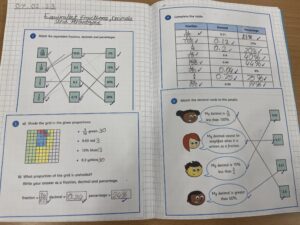
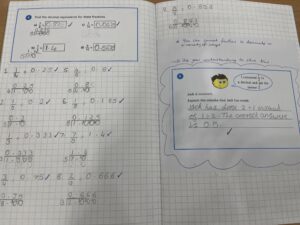
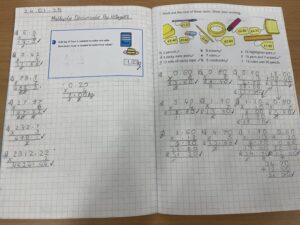
Summer Term
Foundation 1
In Foundation 1 the children begin to recognise and write numerals. They also measure and compare items to see which is the longest and which is the shortest.
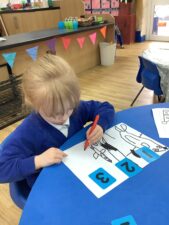
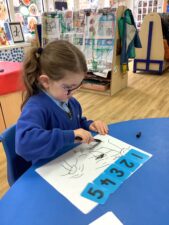
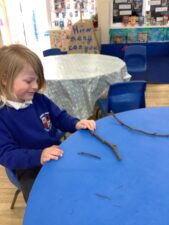
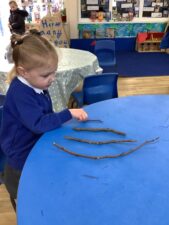
Foundation 2
In Foundation 2 the children enjoy creating their own number track. They roll the dice and eagerly anticipate which number they will land on. The children explore height, building towers and comparing their height, using the vocabulary ‘taller’ and ‘shorter’ to describe them. They also find a selection of items from around the classroom to compare the weight of. They pretend to be a human balance first and feel which object is heavier. Then they use the balance to see if they are right. They begin to use the vocabulary ‘heavier’ and ‘lighter’. The children also enjoy making increasingly complex patterns and describing them to their friends.
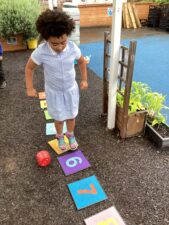
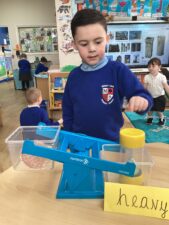


Year 1
In Year 1 the children build on their knowledge of number to create multiplication and division calculations using concrete manipulatives to help with their understanding. They work with shapes to investigate fractions and use coins in a number of situations to explore money, including setting up a role play shop. We finish off the year learning about time, exploring o’clock and half past.
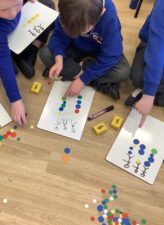
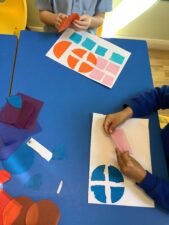


Year 2
In Year 2 the children continue with the wider Maths curriculum developing their knowledge of fractions, relating pictures to the written form and finding fractions of numbers. The children continue to work on making the same amount of money in different ways and build on their knowledge of time by looking at 15 minute and 5 minute intervals. They finish the school year measuring and comparing units of mass, capacity and temperature.
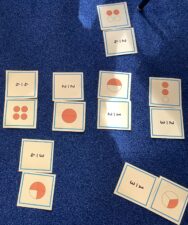

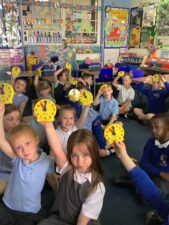
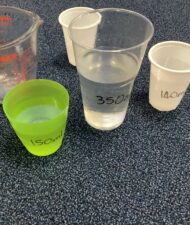
Year 3
In Year 3 the children further develop their knowledge of fractions. To do this they learn to count up and down in tenths and recognise that tenths arise from dividing an object into 10 equal parts and in dividing one-digit numbers or quantities by 10. They use a variety of concrete manipulatives to support this including a ten frame and cubes.
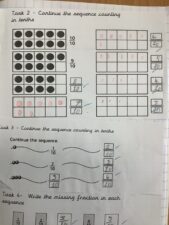
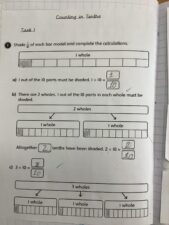
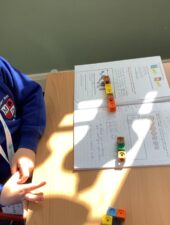

Year 4
In Year 4 the children look at word problems and finding change in their money work. They are still able to use concrete manipulatives to develop their thoughts and processes. They also cover time where they consolidate their knowledge of telling the time to 5 minute intervals, both on analogue and digital clocks. Then they solve problems involving converting between hours and minutes and calculating time intervals.
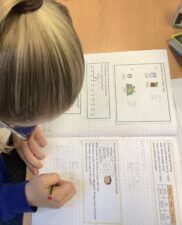
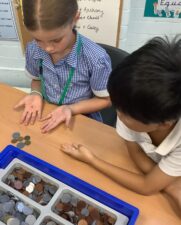
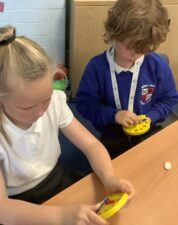
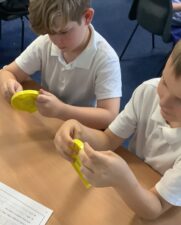
Year 5
In Year 5 the children focus on fractions for the majority of the summer term. They learn how to convert mixed number fractions into improper fractions and how to add and subtract them. They have also learnt how to convert fractions into decimals and percentages. The children continue developing their wider maths knowledge by using protractors to measure angles.



Year 6
In Year 6 they do lots of data handling in this term. They look at different types of graphs and how to find information from them. They also look at properties of 3D shapes. They match shapes to their nets and investigate how many different nets they can make for the same 3D shape.
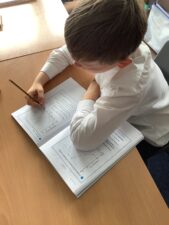
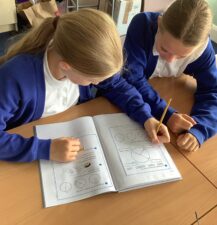
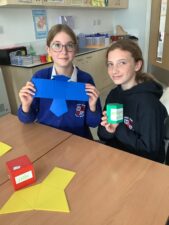
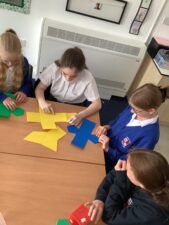
Extra Curricular Clubs
The children also have the opportunity to attend Fun with Numbers where they get to combine learning number facts with some fun activities.
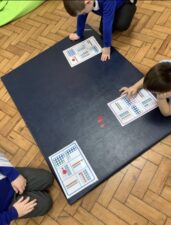
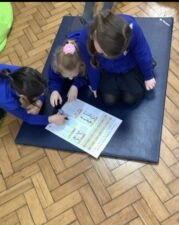
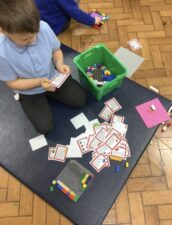

Centre of Excellence
We were very pleased to be successful in achieving the Financial Education award and we are a Centre of Excellence for Financial Education. After achieving our award we had a visit from the High Sheriff of the Lord Lieutenants Office to meet our children and discuss all the work we had completed.
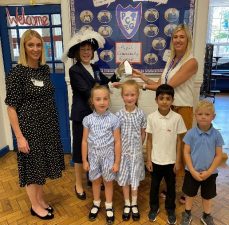
Maths Learning Buddies
We love meeting up with our learning buddies to play maths games together.
